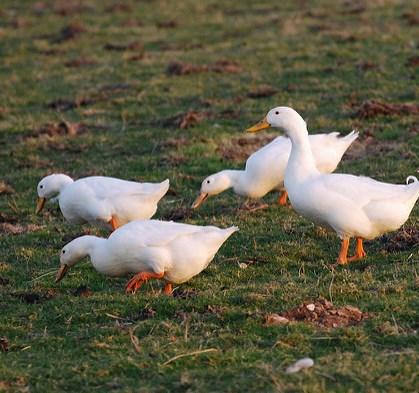Animal health officials in France and the Netherlands reported more highly pathogenic H5N8 avian influenza outbreaks at poultry farms, as the virus gained a greater foothold in Iran.
Thousands of ducks culled in France
Yesterday the World Organization for Animal Health (OIE) said France reported seven more H5N8 outbreaks in farms and backyard flocks of ducks located in southern France.
The outbreaks began between Dec 2 and Dec 16, and all but two are considered resolved. A total of 17,335 birds have been culled, and another 685 have died from H5N8. The largest outbreak began on Dec 13 in 672 ducks housed on a farm in Lussagnet. Another 8,928 birds were destroyed, and the OIE said that outbreak was epidemiologically linked to a previous outbreak at a farm in Eugénie les Bains. All the outbreaks except one are linked to previous outbreaks in the same region, most notably outbreaks in Tarn and Monbahus.
Also, for the first time France is reporting H5N8 in a common magpie, a species that has yet to suffer from the virus in that country, according to a separate OIE report. The bird was found dead on Dec 11 in Almayrac.
Elsewhere in Europe, the Netherlands reported two new outbreaks of H5N8 in laying hens and fattening ducks. One thousand ducks died on a farm in Kamperveen and another 12,989 were destroyed, while another 28,481 hens were destroyed on a farm in Hiaure, both in the northern part of the country. The outbreaks began on Dec 16 and 17 and are ongoing.
In England, the spread of H5N8 to poultry farms has led to new government recommendations. In light of the recent poultry farm outbreak in Lincolnshire, the UK's Department for Environment, Food and Rural Affairs (DEFRA) announced today that poultry gatherings will be banned. This applies to all domestic poultry. According to DEFRA's press release, farmers will be required to keep all poultry housed or otherwise separated from contact with wild birds.
Chief Veterinary Officer Nigel Gibbens, said, "While we have seen no further cases of bird flu following the outbreak in Lincolnshire, we must continue to be vigilant and do all we can to protect against this highly pathogenic strain of the disease."
Low-path H5N1 on two more French farms
The OIE also reported France’s more low pathogenic H5N1 outbreaks in two duck farms in the same region on Dec 13 and 15. Both of those outbreaks are also epidemiologically linked to Eugenie les Bains. So far 800 birds have been destroyed and another 8,385 are susceptible.
The strain was first detected in France earlier this month at duck farm in Gers department. While H5N1 is less contagious than H5N8, the appearance of both strains in the same region could allow for genetic reassortment of the viruses.
H5N8 spreads in Iran
Iran is also experiencing four new outbreaks of H5N8. Two weeks ago, the country announced its first outbreak in Tehran, now two commercial poultry farms, a nature park, and a wetland are reporting H5N8.
After 75 commercial layers died from the virus, another 119,504 were destroyed at a farm in Qom. Another 52,537 layers were also culled on a farm in Tabriz. The wild birds found dead in a wetland and nature park included 37 geese, and several ducks.
The same migratory patterns that saw birds carrying the virus from Siberia to Europe this fall have also spread H5N8 into the Middle East.
See also:
Dec 19 OIE France report
Dec 19 OIE French magpie report
Dec 19 OIE Netherlandsreport
Dec 20 DEFRA statement
Dec 19 OIE France H5N1 report
Dec 18 OIE Iran report



















